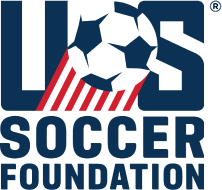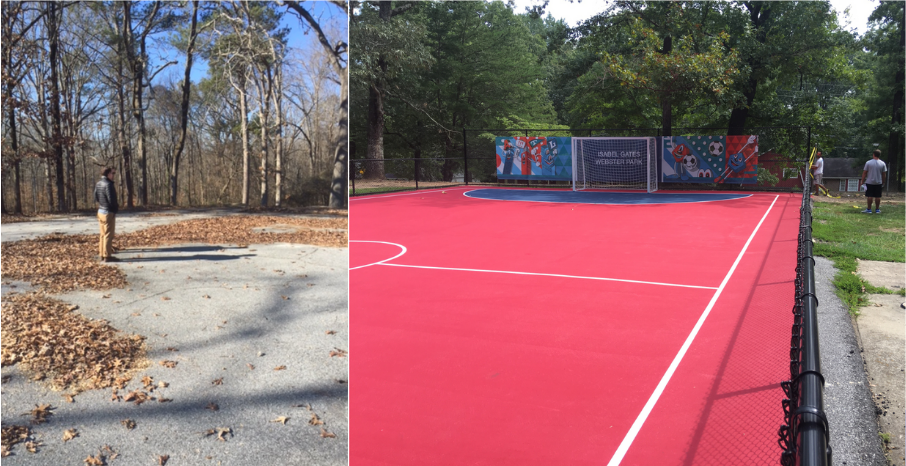

It was only after I graduated from the University of Tennessee with a degree in industrial engineering and completed several job interviews that I realized I did not want to be an industrial engineer. At the time, back in the mid-70s, this meant working inside production facilities with a clipboard in hand, analyzing the interactions between human and machine.
Luckily, I was a businessman. At a young age, I had started a local grass-cutting business that turned into a driveway sealing business by the time I entered college. My partner and I were later approached by the company that made the coating we used. They were looking to train people on how to use their new surface material that was designed specifically for tennis courts. Since a handful of our customers also had tennis courts, we decided to learn about this new product and make a go in this new line of business. This led me to where I’ve been for most of the last 40 years now, working in athletic surfacing operations.
Over this time, you could say I’ve become well acquainted with the surfacing industry. I’ve taken part in thousands of tennis court installations, and my team and I have become certified to handle and a variety of acrylic sports surfacing products.
Little did we know, however, that after doing hundreds of tennis court installations each year, we’d be introduced to and play a role in the U.S. Soccer Foundation’s Safe Places to Play mini-pitch work. But a few years ago, it just so happened that the Foundation was growing its operations to install mini-pitches across the country and needed more certified vendors to get involved. That’s where we came in.
THE AUDITION
Our first projects for the U.S. Soccer Foundation took place in Atlanta. We were immediately thrust into the hustle and bustle of the projects, which were very different from what we were used to. We had a big batch of mini-pitch installations to complete ahead of the 2018 MLS All-Star event, hosted in Atlanta that summer, so we had to adhere to strict timelines; the logos were new; we had to learn a lot on the spot. It was memorable because it freaked me out, but also because it was something new and exciting.
At the Boys & Girls Club of Lawrenceville, for example, we captured an unused part of the parking lot there and turned it into a pitch. We’ve never done anything like that before. Then over at Isabel Gates Webster Park, we transformed a seemingly random, paved area in the middle of the park into a pitch. By the end of our first trip, we’d created nine mini-pitches across the city.

Before and after: Isabel Gates Webster Park
Taking an unused space, like a vacant lot or a dilapidated court, and converting it to a pitch has become really pretty easy. Since our first ‘audition’ in Atlanta, we’ve surfaced mini-pitches in Nashville, Cincinnati, and Durham, and are headed to Memphis this summer, installing over 20 mini-pitches with the U.S. Soccer Foundation in three years.

Mini-pitches at East End Park (Durham, North Carolina)
MORE THAN A SPACE
You can imagine that after decades of installing tennis courts – the same lines, the same green coloring – the work would get a little tired. But the mini-pitches have added some vibrance to our projects, and they have also inspired us. There are a lot of facilities across the country that are never going to be used as tennis courts again and mini-pitches provide an efficient, inviting, and unique way to bring those facilities back to life.
Not only that, but soccer is on the rise. We’re seeing it wherever we go when we’re working on projects. Soccer is definitely getting more popular and the mini-pitch repurposes spaces such that they can accommodate more people and provide a better way to play. It’s exciting to see an unused space start to get used.

Mini-pitch at Hartwell Community Center (Cincinnati, Ohio)
We’ve seen a lot of entities that will just fix up the courts occasionally and that’s it. No more thought is put into it. In a lot of cases, there seems to be no coordination with the facility and programming – they’re operating separately.
But the Foundation’s community-focused approach to installation and site selection for these mini-pitches is unique because it involves thoughtful evaluation and coordination. It involves the Foundation team participating in community meetings, working to ensure that the space will be used by the entity – be it a school or a park department – for both high-quality soccer programming and free play. It involves collecting data on the pitch’s usage to better inform other installation projects.
MY ‘WHY’
We are proud to have been able to work on these mini-pitch projects over the last several years and will continue to do so. Our role in the project may be simple, but the long-term benefits from that work are tremendous. When we come in to help fix up a play space, we have no doubt that more people are able to get outside and use it in a way that supports their health. The Foundation’s mini-pitches are part of a larger effort to get people active, give them a safe place to play, and build community resilience.
The COVID-19 pandemic has intensified this need. Now more than ever, it’s imperative that these kinds of facilities are ready for kids to play on as soon as it is safe to do so. What I think we can all collectively agree on is that we, as people, do not want to stay cooped up. And when it’s safe to get outside, we should all have access to reliable options to be active. Mini-pitches provide just that.
The U.S. Soccer Foundation has installed 300 mini-pitches across the country over the last five years. Follow this link to learn more about Safe Places to Play mini-pitches.